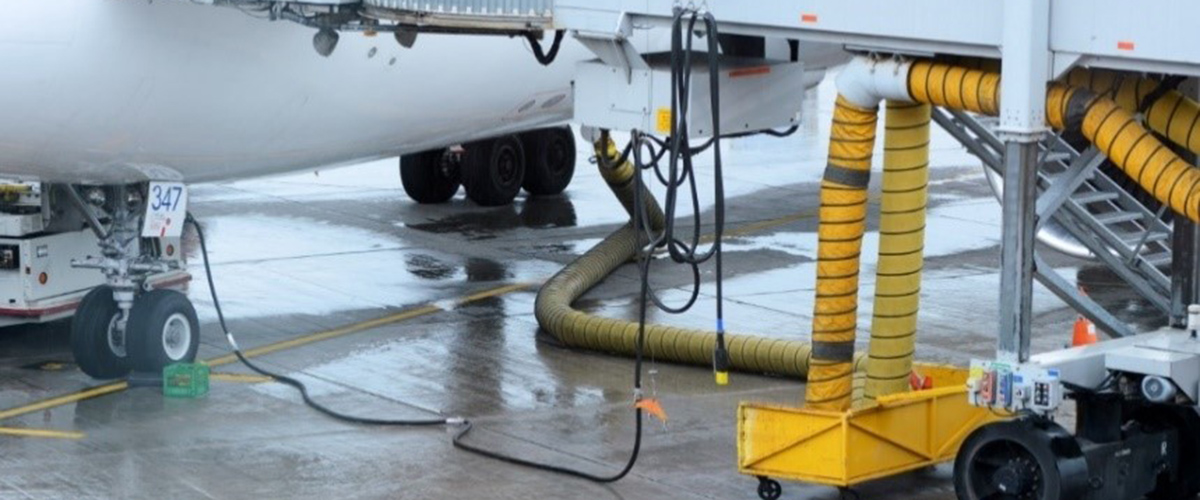As part of the City of St. Louis’ (which owns and operates St. Louis Lambert International Airport) efforts to manage and reduce air pollution, the City is upgrading several of their Terminal A gates with electric pre-conditioned air (PCA) and electric ground power. The electric PCA and ground power equipment will reduce air emissions by reducing aircraft use of auxiliary power units (APUs) and diesel-powered ground power units. The Federal Aviation Administration’s (FAA) Voluntary Airport Low Emissions (VALE) grant program provides funding to airports located in areas with poor air quality to undertake projects that reduce emissions. The St. Louis Lambert International Airport (Airport) is located in an U.S. Environmental Protection Agency designated nonattainment area for the criteria pollutants ozone and particulate matter, and in a maintenance area for carbon monoxide (CO). As such, the Airport applied for and was awarded VALE funding for the project.
The Airport engaged HMMH to develop the VALE application, which consisted of preparing the preliminary and the full grant applications. The preliminary application described the project at a high level, the justification for seeking approximately $1.7 million in grant funds, an initial estimate of the emissions savings for several air pollutants, as well as a cost-benefit analysis of the project. Once the FAA approved the preliminary application, HMMH prepared the full application with a more detailed project description, air emissions modeling study, air emission reduction credits (AERCs), and a full cost effectiveness analysis. HMMH modeled the emissions for both a baseline scenario and a low emissions scenario in FAA’s Aviation Environmental Design Tool (AEDT) version 2d.
- The baseline scenario reflected gate operations without installation of electric PCA and ground power over the 20-year project timeline. The baseline scenario took into account the most recent years’ worth of operations at the project gates and anticipated future growth;
- A Low Emissions Scenario considered the installation and use of four electric PCA units and five electric ground power units. The emission calculations took into account climatic data as well as the impact of aircraft Remain Overnight (RON) operations;
- The cost effectiveness analysis estimated the dollar amount per ton of emissions reduced from the project.

